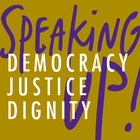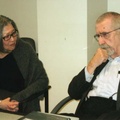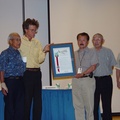Read Part 4 >>
Western Defense Command Preparation for Individual Detention
On December 17, 1944, Major General H. C. Pratt, Commander, WDC, rescinded the Mass Exclusion Order that ordered all Japanese Americans removed from the West Coast. Effective January 2, 1945, individual disloyalty, instead of race, would be used as the test for exclusion from the Pacific States. It also provided that “any person of Japanese ancestry about whom there is available information indicating disloyalty will continue to be excluded on an individual basis.”1
In the months leading up to the announcement ending Japanese American exclusion from the West Coast, the WDC had begun secret discussions of contingency plans to detain individuals.2 As early as July 3, 1944, a secret memorandum to John McCloy, Assistant Secretary of War, from C.H. Bonesteel, Major General, WDC, urged the Commanding General, WDC, to “determine those individuals of Japanese ancestry whose exclusion from the vital defense area is to be continued.”3 A November 30, 1944 memo from John McCloy, Assistant Secretary of War, to Secretary of War Stimson, discusses the desire to detain the potentially disloyal, “on the theory that enforcement of individual exclusion is so difficult as applied to Japanese (All of whom look alike etc.) that mass exclusion can be safely rescinded only if the ones whom the military determines are the most dangerous are actually locked up.”4
The product of these discussions on continued detention was a top-secret5 “list of persons of Japanese ancestry who the Commanding General, WDC, considers must be excluded from critical areas of the WDC and, in addition, must be controlled by detention in a camp similar to the Tule Lake Segregation Center.” A December 9, 1944 memorandum to Chief of Staff, War Department from W.H. Wilbur, Brigadier General, for the Commanding General of the WDC, indicated that the number of individuals who likely would be detained at Tule Lake would be between 4,500 and 5,500.6 The WDC list included names of persons in the following categories:
A. Refused to register on the Selective Service questionnaire.
B. Refused to serve in the U.S. Armed forces.
C. Refused, without qualification, to swear allegiance to the U.S.
D. Submitted voluntarily written statement of their loyalty to Japan.
E. Are agents or operatives of Japan.
F. Voluntarily requested revocation of their American citizenship.
The WDC completed its secret list of those it wished to keep imprisoned: 4,963 Japanese Americans, 3,066 of whom were in Tule Lake.7 But the WDC noted some problems with its list, recognizing that “a fair proportion of these citizens had neither given negative answers to the Loyalty Question, nor had requested repatriation; until this time, their records were entirely clear.” Paradoxically, the lack of evidence of disloyalty was cause for continued incarceration, because, the WDC said, “This is another illustration of the fact that at any particular moment it was impossible to determine who, within the Japanese population, was potentially dangerous.”8
As the deadline for ending racial mass exclusion from the West coast drew closer, finding a legal ground to detain the individuals on the WDC list became a nagging concern. A November 28, 1944 memo from McCloy to Secretary of War Stimson, which explored the government’s dilemma over the legality of continued incarceration of Japanese Americans suspected of being disloyal, cited “the old question as to the legal authority to detain potentially dangerous citizens of the United States who are not charged with any crime.”9
Believing that lawsuits would be filed challenging the military decision for individual detentions at Tule Lake, in a January 8, 1945 memo, Major General Pratt wrote about the potential problem of defending the detentions in a court of law.
[To] offer evidence showing the facts and reports concerning the particular excludee is very likely to result in the court attempting to substitute its judgment for that of the Commanding General. The introduction of such evidence would raise the subsidiary question of the extent to which the excludee could produce evidence to contradict the facts or reports contained in the administrative file.
Commander Pratt outlined the substantial administrative task of redacting files and the problem of defending a case where evidence to support the exclusion was removed:10
In each case there would have to be removed from each administrative file that portion which could not be introduced into evidence because it was deemed to be secret or confidential by the intelligence agencies referred to. This would remove from the files some of the most important and strongest evidence against the individual.11
After imprisoning people with evidence that the WDC defined as so secret that it could not be disclosed, the government was faced with finding legal authority for continued incarceration. The WDC found its solution to the problem: stampeding the imprisoned Nikkei to renounce their U.S. citizenship.
Notes:
1. Supplemental Report, page 194.
2. President’s June 20, 1944 memorandum was referenced but missing from file.
3. RG 107-47-9. Declassified 9-27-58. ASW 014.311 WDC Permits. RG 220, CWRIC, Box 2, Numerical File 780-781
4. RG 107-47-9. ASW 014.311 WDC Permits. RG 220, CWRIC, Box 2, Numerical File 654-655
5. RG 107, Entry 47, Box 9, ASW 014.311 WDC Permits, declassified Sept. 27, 1958. RG 220 CWRIC Box 2, Numerical file 453-1597.
Alluding to prior disagreements between the Army and the WRA over security matters, the memo urges, “that the WRA be informed of the great importance of secrecy in connection with this matter. Not only should the list and all names on it be kept a secret to be divulged only to a few selected individuals, but in addition the fact the list has been made is secret.”
6. RG 107, Entry 47, Box 9, ASW 014.311 WDC Permits, declassified Sept. 27, 1958. RG 220 CWRIC Box 2, Numerical file 453-1597.
7. RG 220, CWRIC, Box 2, Numerical File 634-35. December 11, 1944 secret memo to Dillon Myer from Col. Harrison Gerhardt, Executive to the Assistant Secretary of War Stimson.
8. Supplemental Report, page 118. The logic recalls that of Lt. General John L. DeWitt, who as Commander of the Western Defense Command, argued the necessity of wholesale removal of the Japanese American population on the West coast as security threats. DeWitt’s reasoning was that “the very fact that no sabotage has taken place to date is a disturbing and confirming indication that such action will be taken.”
9. RG 107-47-9. ASW 014.311 WDC Permits. RG 220, CWRIC, Box 2, Numerical File 453-1597.
10. In the renunciant cases, the Department of Justice relied on passages of The Spoilage in arguing its case rather than using their own voluminous files. DOJ transcripts of telephone conversations and meeting notes, memoranda, and reports discussing details of policy and events at the Segregation Center from organizations including the FBI, the WRA, and the WDC explain the mass renunciations in far greater detail and complexity than The Spoilage. Yet, they and the Western Defense Command Supplemental Report rely on The Spoilage to explain the mass renunciations at Tule Lake, despite the existence of their own detailed, extensive records collected during that period.
11. RG 220 CWRIC Box 2, Numerical file 750-756. January 8, 1945 Memo H.C. Pratt, Major General U.S. Army, Commanding to Chief of Staff, U.S. Army War Department, Att: Judge Advocate General, cc to McCloy, re Litigation pertaining to Exclusion. RG 338-2-7 013,3 Litigation, Trials, etc. Restricted.
* This article was originally published in the Journal of the Shaw Historical Library, Vol. 19, 2005, Klamath Falls, OR.
* * *
* Barbara Takei will be a presenter for “The Tule Lake Segregation Center: Its History and Significance” session at JANM’s National Conference, Speaking Up! Democracy, Justice, Dignity on July 4-7, 2013 in Seattle, Washington. For more information about the conference, including how to register, visit janm.org/conference2013.
© 2005 Barbara Takei












